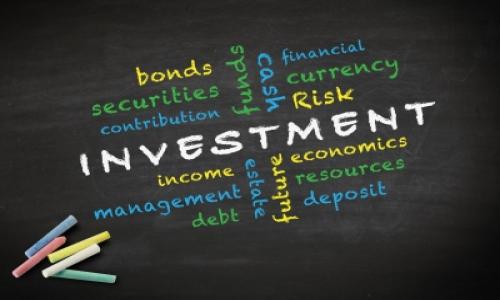Articles
Selected category: Bonds
Unconventional times require unconventional thought. Breaking from the rigidity of traditional bond funds, some investment houses have created funds that are literally unconventional bond funds.
Read →Major Banks Are Offering Structured Products Paying 8% a Year to Their Customers, Is it Safe?
Citibank, Bank of America, JP Morgan, Morgan Stanley and Goldman Sachs are creating interesting structured instruments for their subsidiaries' brokerage customers. These products offer a fixed return above those available in even the best savings and CD accounts. Is the environment still dangerous for banks and are these products too good to be true?
Read →The Attraction of Dividend Stocks to Traditional Bond Investors
At this point in my young adult life I can tell my children (when and/if they come to exist) that when I started driving gas was $0.98 a gallon, Sudan was one nation and that dividend stocks attracted bond investors. With the decimation of 2008 and early 2009 behind us, the economy is in recovery mode. We have all heard that, but it is.
Read →Consumer Price Index (CPI-U)
The CPI-U or Consumer Price Index for Urban Wage Earners and Clerical Workers is published monthly by the Bureau of Labor Statistics of the U.S. Department of Labor. It is a measure of the average change in consumer prices over time for a fixed market basket of goods and services, including food, clothing, shelter, fuels, transportation, charges for doctors' and dentists' services, and drugs.
Read →Commercial Paper Vehicles
Commercial paper is a company's senior, unsecured debt. Several companies offer programs through which depositors can maintain commercial paper accounts. The companies that offer these accounts find them to be effective ways to borrow at very low costs of capital directly from depositors. Most issuers claim that these accounts are fully negotiable and have instituted banking features (such as ATM access and check writing) as well as competitive rates.
Read →Why Invest In a Laddered Bond Portfolio
A laddered bond portfolio allows investors to have bonds spread all along the yield curve so they constantly have bonds maturing, enabling them capture the highest yields available.
Read →Laddered Bond Portfolios versus Bond Funds
The first question that generally comes to mind is why go to all this trouble to put together a bond portfolio? Why not invest in a bond fund? Good questions both, and a do-it-yourself bond portfolio is not necessarily better or worse than a bond fund. It has more to do with an individuals objectives, risk tolerance, etc.
Read →Yield-to-maturity versus Current Yield
Investors new to bonds often wonder what the difference is between yield to maturity and current yield.
Read →Bonds for newbies
A newbie purchasing bonds for the first time can be a little bit like the coffee virgin at Starbucks ordering his first ever specialty drink.
Read →Three Popular Bond Investment Strategies
This article examines three popular bond investment strategies - the barbell, the bullet and the ladder.
Read →Investing in Bond Funds versus Bonds
Bond funds are mutual funds that invest in bonds. The funds can invest in government or corporate bonds of short, medium, or long-term maturity. This article explores investing in bond funds versus individual bonds.
Read →Bond Fund Fees
There are a lot of fees to watch out for and to understand when you are considering investing in a bond fund (these apply to any mutual fund).
Read →Bearer Bonds
Bearer bonds, also known as coupon bonds are bonds in which the physical certificate is held by the owner rather than being a registered security like bonds are today.
Read →Bond Basics
This article will give you the ability to go out and purchase a bond on your own.
Read →US Treasuries Series I Bonds
US Treasury Series I bonds are inflation indexed savings bonds and provide a good alternative for protecting the value of your capital in rising interest rate environments. The Bureau of the Public Debt is the only seller of these bonds so you are unlikely to learn about them through your bank or broker.eries I bonds are issued by the U.S. Treasury at face value and have a maximum duration of 30 years. These bonds can be sold any time after five years without penalty, and between one and five years after purchase with a loss of the most recent three months interest. Series I bonds are now issued in both paper and electronic format. Whereas the Treasury previous limited annual purchases by a single individual to as much as $60,000 per calendar year, new rules limited purchases to $5,000 in each format, for a total of only $10,000 per calendar year. The interest rate on Series I bonds is reset biannually - in each May and November - and is composed of two parts.
Read →












